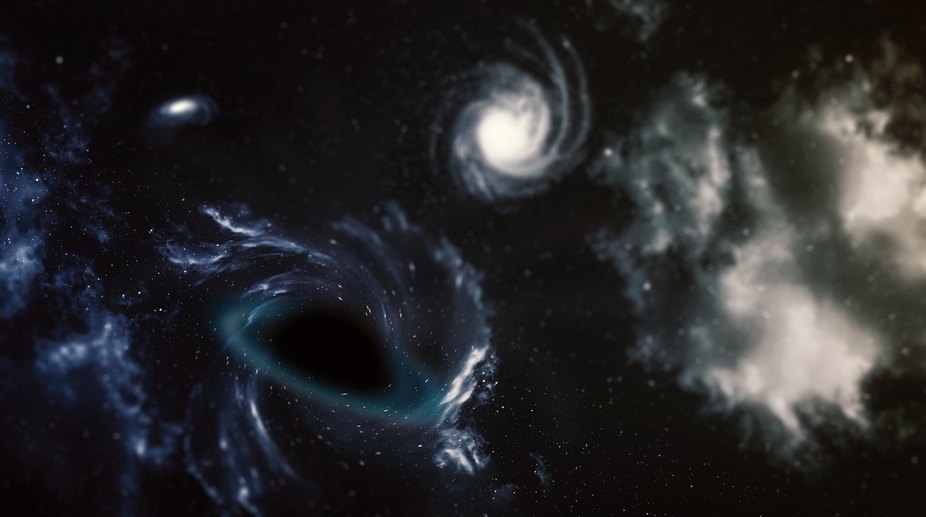An international team of scientists has announced the third detection of gravitational waves — ripples in space and time — demonstrating that a new window in astronomy has been firmly opened. As was the case with the first two detections, the waves were generated when two black holes collided to form a larger black hole.
The newfound black hole, detected by the Laser Interferometer Gravitational-wave Observatory, formed by the merger, has a mass about 49 times that of our sun.
This fills in a gap between the masses of the two merged back holes detected previously by Ligo, with solar masses of 62 (first detection) and 21 (second detection). The new observation was made by the Ligo Scientific Collaboration together with the European-based Virgo Collaboration, which includes Ed Daw from the University of Sheffield’s department of physics and astronomy.
“Because black holes don’t emit light, we don’t know as much about them as we do about stars that shine,” said Daw, “By observing the waves of gravity that some black hole systems emit, we can infer the physics driving the emission of the gravitational waves, and probe the ideas of Einstein and others of how gravity works.
“We can also start to conduct a sort of black hole census — how many black holes are in your average galaxy and how massive are they? We currently don’t really understand how the universe produced so many black hole, binaries tens of times as massive as our sun, and the quest to understand how they came about is an interesting one in its own right.”
Daw added, “This latest discovery is further evidence of Ligo developing from a first-discovery instrument to an observatory that explores our mysterious universe.”
The new detection occurred during Ligo’s current observing run, which began on 30 November 2016, and will continue through the summer. Ligo is an international collaboration with members around the globe.
Its observations are carried out by twin detectors — one in Hanford, Washington, and the other in Livingston, Louisiana — operated by the California Institute of Technology and the Massachusetts Institute of Technology with funding from the National Science Foundation.
Ligo made the first-ever direct observation of gravitational waves in September 2015 during its first observing run since undergoing major upgrades in a programme called Advanced Ligo.
The second detection was made in December 2015. The third detection, called GW170104 and made on 4 January 2017, has been described in a new paper accepted for publication in the journal Physical Review Letters.
In all three cases, each of the twin detectors of Ligo detected gravitational waves from the tremendously energetic mergers of black hole pairs. These are collisions that produce more power than is radiated as light by all the stars and galaxies in the universe at any given time.
The recent detection appears to be the farthest yet with the black holes located about three billion light years away. The black holes in the first and second detections are located 1.3 and 1.4 billion light years away, respectively. The newest observation also provides clues about the directions in which the black holes are spinning.
As pairs of black holes spiral around each other, they also spin on their own axes-like a pair of ice skaters spinning individually while also circling around each other. Sometimes black holes spin in the same overall orbital direction as the pair is moving — what astronomers refer to as aligned spins — and sometimes they spin in the opposite direction of the orbital motion.
What’s more, black holes can also be tilted away from the orbital plane. Essentially, black holes can spin in any direction. Ligo scientific collaboration spokesperson, David Shoemaker from the Massachusetts Institute of Technology said, “We have further confirmation of the existence of stellar-mass black holes that are larger than 20 solar masses — these are objects we didn’t know existed before Ligo detected them.
“It is remarkable that humans can put together a story, and test it, for such strange and extreme events that took place billions of years ago and billions of light-years distant from us. The entire Ligo and Virgo scientific collaborations worked to put all these pieces together.”
The new Ligo data cannot determine if the recently observed black holes were tilted but they imply that at least one of the black holes may have been non-aligned compared to the overall orbital motion.
More observations with Ligo are needed to say anything definitive about the spins of binary black holes but these early data offer clues about how these pairs may form.











